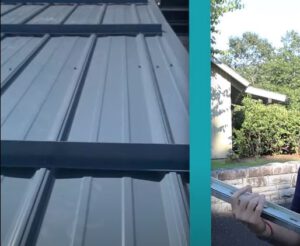Can I Install a Roof Snow Guard System on My Australian Home?
 Australia’s diverse weather conditions present various challenges, and while snow isn’t a common problem in many areas, it can be a significant concern in certain regions. This brings us to an essential question: “Can I install a roof snow guard system on my Australian home?” Let’s explore this topic in detail.
Australia’s diverse weather conditions present various challenges, and while snow isn’t a common problem in many areas, it can be a significant concern in certain regions. This brings us to an essential question: “Can I install a roof snow guard system on my Australian home?” Let’s explore this topic in detail.
Understanding Snowfall in Australia
While Australia is generally known for its sunny beaches and desert landscapes, it does experience snowfall in specific regions. The most notable areas include the high country regions of New South Wales, Victoria, and Tasmania. Here, during the winter season (June to August), snowfall can be heavy enough to potentially cause roofing issues.
The Concept of a Roof Snow Guard System
A roof snow guard system, or snow retention system, is designed to prevent the sudden release of snow and ice from a roof, known as a roof avalanche. These systems hold the snow in place, allowing it to melt gradually and drain off the roof in a controlled manner. This prevents damage to property and injury to people that could result from a sudden snow slide.
Do You Need a Snow Guard System in Australia?
If you live in an area of Australia that receives regular heavy snowfall, then a snow guard system could be beneficial. For example, homes in the Alpine regions of Victoria or New South Wales, where snowfall can be significant, may benefit from such a system.
However, most parts of Australia do not receive heavy snowfall, so a snow guard system would not be necessary. Instead, homeowners should focus on other weather-related roof protection measures, such as wind or hail resistance.
Types of Snow Guard Systems
There are various types of snow guard systems available, each with its unique features and benefits. Here are a few options:
Snow Bars or Rails
These are horizontal bars attached to the roof that hold back the snow. They’re typically made of durable materials like metal and are very effective at preventing large amounts of snow from sliding off the roof at once.
Snow Pads or Cleats
These are individual pieces attached to the roof in a pattern. They create a physical barrier that prevents snow from sliding down the roof.
Snow Fences
These are similar to snow bars but are larger and more robust. They are typically used on roofs with a steeper pitch or those that experience heavier snowfall.
Installation of Snow Guard Systems
 Installing a snow guard system requires professional expertise. It’s crucial to ensure that the system is installed correctly to avoid potential roof damage or ineffective performance.
Installing a snow guard system requires professional expertise. It’s crucial to ensure that the system is installed correctly to avoid potential roof damage or ineffective performance.
The installation process generally involves determining the correct layout of the snow guard devices on the roof, based on factors such as the roof’s size, slope, and the region’s average snowfall. The snow guards are then securely attached to the roof using screws or other fixing methods.
Potential Challenges
While snow guard systems can be beneficial, they also present potential challenges. Improper installation can lead to roof damage, and the systems can sometimes be visually obtrusive. Furthermore, snow guard systems increase the load on the roof, as snow is held in place rather than being allowed to slide off. This requires the roof structure to be strong enough to handle the extra weight.
Final Thoughts
In conclusion, while it is possible to install a roof snow guard system on your Australian home, whether you should do so depends on your specific circumstances. If you live in a region that experiences regular heavy snowfall, a snow guard system could be a good investment. However, in areas where snow is rare, other weather-proofing measures might be more appropriate. Always consult with a professional roofer or builder to understand the best options for your home.
ARE THERE ANY SPECIFIC BUILDING CODES OR REGULATIONS FOR ROOFS IN AUSTRALIA?

Links
- Why Choose
- About Us
- Case Studies
- Our Services
- Contact
Services
- Petroleum and Gas
- Industrial Construction
- Chemical Research
- Mechanical Engineering
- Power Energies
© 2021 By Magic Page Plugin
- Home
- About
- Services
- Contact
